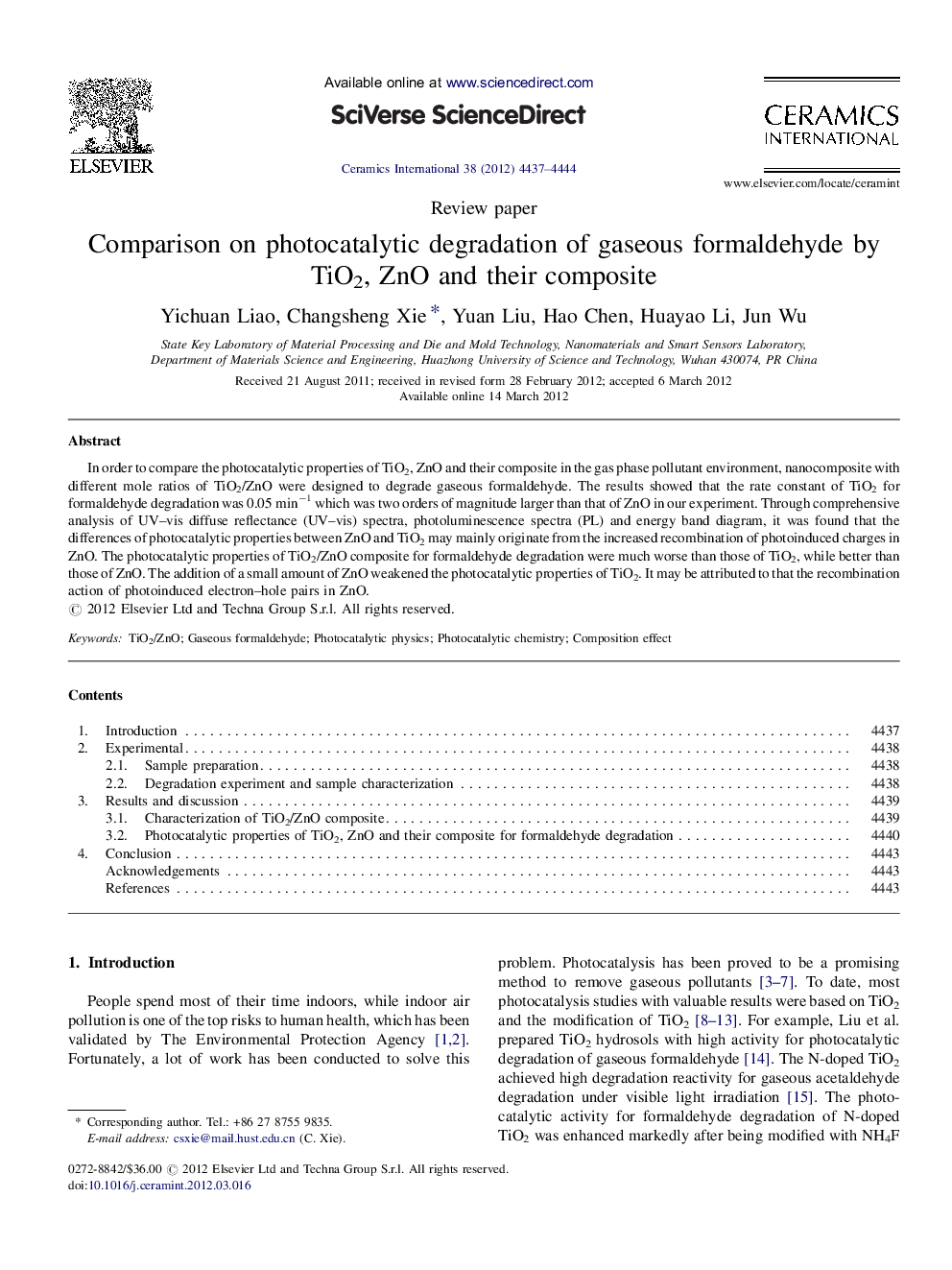| Article ID | Journal | Published Year | Pages | File Type |
|---|---|---|---|---|
| 1463702 | Ceramics International | 2012 | 8 Pages |
In order to compare the photocatalytic properties of TiO2, ZnO and their composite in the gas phase pollutant environment, nanocomposite with different mole ratios of TiO2/ZnO were designed to degrade gaseous formaldehyde. The results showed that the rate constant of TiO2 for formaldehyde degradation was 0.05 min−1 which was two orders of magnitude larger than that of ZnO in our experiment. Through comprehensive analysis of UV–vis diffuse reflectance (UV–vis) spectra, photoluminescence spectra (PL) and energy band diagram, it was found that the differences of photocatalytic properties between ZnO and TiO2 may mainly originate from the increased recombination of photoinduced charges in ZnO. The photocatalytic properties of TiO2/ZnO composite for formaldehyde degradation were much worse than those of TiO2, while better than those of ZnO. The addition of a small amount of ZnO weakened the photocatalytic properties of TiO2. It may be attributed to that the recombination action of photoinduced electron–hole pairs in ZnO.
